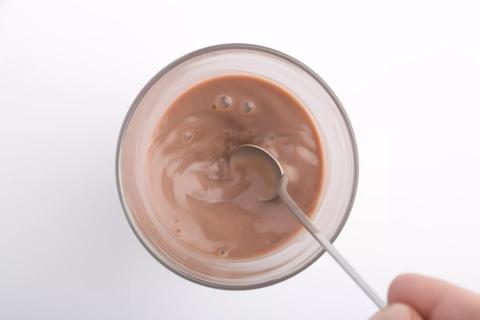Here’s what to consider when you make a trip down the dairy aisle

For the last several years, nondairy milk options have skyrocketed in popularity, directly challenging cow milk for grocery aisle dominance. From lactose tolerance issues to going vegan or dairy-free, there are a number of reasons these alternatives are rising in prominence among shoppers.
Advertisement
Cleveland Clinic is a non-profit academic medical center. Advertising on our site helps support our mission. We do not endorse non-Cleveland Clinic products or services. Policy
But how do these alternatives stack up to the long-time staple of cow’s milk?
Cow’s milk remains the most popular option, especially for children. Cow’s milk offers a good balance of naturally occurring calories from fat, protein and essential vitamins and minerals, like vitamin D and calcium, providing key nutrients kids need for growth and development.
Most alternatives are fortified with added calcium and vitamin D that are naturally occurring in dairy, but what about other nutritional items like calories and protein?
We took a look at eight varieties of milk and spoke with registered dietitian Julia Zumpano, RD, LD, about the differences between all of them and what tips you should keep in mind when choosing one.
Though cow’s milk is rich in protein, calcium and B vitamins, choosing a milk alternative might be a good option if you:
Here are eight varieties to consider.
One of the more popular nondairy alternatives, almond milk is rich in vitamin E while being lower in calories than cow’s milk (a cup of unsweetened almond milk generally contains 30-45 calories and 2 grams of fat). It’s also popular for cooking purposes and as an addition to your morning coffee.
Advertisement
That said, if you have a nut allergy, you’ll obviously want to steer clear of almond milk. It provides very minimal protein and fiber, so if you’re drinking almond milk, make sure to make up for those nutrients elsewhere. Zumpano recommends avoiding sweetened versions with their sugar additives and opting for unsweetened varieties instead.
If you’re vegan or lactose-intolerant, cashew milk is yet another nut-based alternative that has a rich, creamy taste. Cashew milk is loaded up with vitamin E, like almond milk, and is low on calories (one cup of unsweetened cashew milk typically contains between 25-35 calories), cholesterol and sugar.
While store-bought cashew milk is, like other options, usually fortified with vitamin D and calcium, it lacks fiber and protein. And, finally, like almond milk, cashew milk is a no-go for anyone with nut allergies.
A very popular nondairy option, the plant-based milk alternative is cholesterol-free, low in saturated fats and high in protein. Oh, and it’s another great lactose-free option and is great for cooking needs, too.
A cup of unsweetened soy milk typically contains around 80-90 calories, 4 grams of fat and 9 grams of protein.
But soy milk, especially if sweetened, can be high in calories and if you have a soy allergen, you’ll want to avoid this option.
Besides being a milk alternative for consumers with allergies (nut, soy or lactose), it has a sweeter taste which usually means fewer sugar additives. And, like other alternatives, it’s well fortified for other nutrients.
The big downside is that rice milk can be high in carbohydrates and calories (about 120 to140 calories and 3 grams of fat per cup) while having very little protein and fiber.
Yes, coconut milk beverage because simply “coconut milk” usually refers to the fat- and calorie-laden version found on your grocery shelf that is traditionally used in soups and curries.
Like other options, though, coconut milk has zero protein and while it’s low in calories (about 45 calories per cup), it’s also high in fat (about 4 grams per cup). There are many coconut milk options that have been diluted to offer less fat and calories.
“Keep in mind the fat found in coconut milk is saturated fat, which we want to keep at a minimum if heart health is a concern,” says Zumpano.
The upside, she says, is that coconut milk, if unsweetened, contains no carbs in an 8-ounce serving and can offer a thick and creamy plant-based alternative suitable to dairy and nut allergies.
Hemp milk comes with heart-healthy omega-3 fatty acids and fewer calories than whole milk but, as Zumpano notes, it’s not as readily available at major grocery stores.
Advertisement
A cup generally contains about 80 calories, 7 grams of fat and 2 of protein.
A more recent, trendy addition to nondairy milk options, oat milk is made from, well, oats, water and additional ingredients like added oil, gums or thickeners. One big advantage of oat milk for those with dietary restrictions or food sensitivities is that it’s naturally free of dairy, lactose, soy and nuts.
Like a lot of other nondairy options, oat milk generally comes with added calcium, vitamin D, vitamin A and riboflavin. It also typically has a bit more protein (about 3-5 grams per cup) and fiber than other alternatives.
The downside? Oat milk usually has more carbs and calories than other plant-based options, with a cup from most brands adding up to around 100 calories or greater.
Raw milk is another way of saying “unpasteurized milk.” And while some people believe raw milk has more nutrients, promotes better health and might be OK for those with lactose intolerance, it’s actually not advisable to drink it.
According to the U.S. Centers for Disease Control and Prevention (CDC), unpasteurized milk is 150 times more likely to cause foodborne illness than pasteurized milk — and 13 times more likely to lead to hospitalization.
Advertisement
Pasteurized milk has the same nutrients as unpasteurized and either option will still trigger an allergic reaction for lactose-intolerant drinkers.
With all these options in the dairy aisle at the grocery store, where do you even begin?
“If you’re looking to maximize certain vitamins or nutrients like calcium, vitamin D, vitamin E or riboflavin, check specific brands so you can compare and find the highest value of what you’re hoping to achieve,” says Zumpano.
In terms of adding a splash to your coffee in the morning, almond milk works well. When it comes to baking, soy milk or oat milk can be great substitutes for traditional dairy ingredients like milk and heavy cream. In most recipes, you can swap any milk alternative for milk in a 1:1 ratio.
Be aware that hemp milk and coconut milk have been known to overwhelm baked goods with their flavor.
Also, chances are that if you’re an adult, you’re not drinking much chocolate milk (we’re not judging if you do, though), but your kids might be. And many nondairy milk options come in flavored varieties (typically vanilla) to help make them a bit more palatable.
There’s nothing wrong with these flavored milks, of course, but it’s all about moderation. These options typically come with added sugars and that brings more calories which offset some of the healthier reasons you’re drinking milk in the first place.
Advertisement
Instead, Zumpano suggests choosing the unsweetened flavored options or add flavor to the plain, unsweetened versions, like vanilla or cocoa powder.
Learn more about our editorial process.
Advertisement

No single food will increase your milk, but an overall healthy diet will help

Rich in calcium and protein, milk has 18 of 22 essential nutrients that your body needs

The short answer from a sports nutrition expert

But there's one kind of milk you should always be drinking

Milk alternatives aren't good for your child's growth + development

You’ll enjoy this delicious blend of unexpected flavors

Type 2 diabetes isn’t inevitable with these dietary changes

Applying a hot or cold compress can help with pain